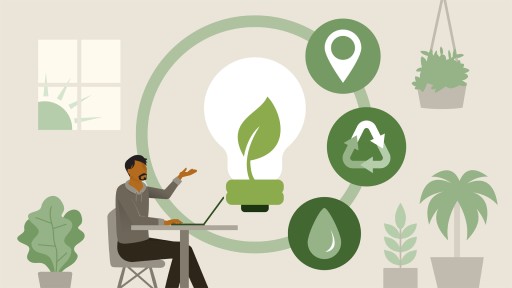Sustainability at Work: Strategies for Creating a Greener Workplace
In recent years, there has been a growing emphasis on sustainability in our personal lives, but it is equally important to extend those values to our workplaces. Adopting sustainable practices not only helps the environment but also contributes to a positive corporate image, and has been shown to increase employee productivity and satisfaction. Here are some strategies for creating a greener workplace:
1. Implement Recycling Programs: The most basic and essential step towards sustainability is establishing a robust recycling program. Provide separate bins for paper, plastics, glass, and metal, and ensure that staff are educated on what can and cannot be recycled. Encourage the use of recycled paper and office supplies.
2. Go Paperless: The excessive use of paper contributes to deforestation and waste. Implement digital alternatives where possible. Use online platforms for internal communication, document sharing, and project management. Encourage employees to digitally archive files instead of printing and storing hard copies.
3. Energy Conservation: Reduce energy consumption by making simple changes. Switch to energy-efficient lighting like LED bulbs, install motion detectors to automatically turn off lights when rooms are unoccupied, and adjust the temperature settings to conserve heating and cooling energy. Encourage employees to turn off electronics and unplug chargers when not in use.
4. Sustainable Transportation: Promote environmentally friendly commuting options for employees. Encourage carpooling, use of public transportation, or bike-to-work programs. Consider providing incentives such as preferred parking spots or subsidized public transportation passes.
5. Water Efficiency: Encourage water conservation by installing low-flow faucets, toilets, and urinals. Educate employees on reducing water usage by turning off taps while not in use and fixing leaks promptly.
6. Green Purchasing: Prioritize environmentally friendly vendors for office supplies, equipment, and services. Look for products with minimal packaging and recyclable materials. Consider purchasing refurbished or second-hand equipment when possible.
7. Employee Engagement: Involve employees in sustainability initiatives to increase their commitment to greener practices. Form a sustainability committee composed of representatives from different departments, and regularly communicate updates, successes, and challenges. Encourage employees to share ideas and suggestions for improvement.
8. Sustainable Dining: Promote sustainable eating habits by sourcing catering services that prioritize local, seasonal, and organic produce. Provide reusable plates, cups, and cutlery instead of using disposable options.
9. Green Cleaning: Use eco-friendly cleaning products that do not harm the environment or impact indoor air quality. Minimize the use of harsh chemicals and opt for safer alternatives.
10. Continuous Improvement: Regularly evaluate and update sustainability practices to adapt to changing technologies and employee needs. Set specific goals and track performance to measure progress. Celebrate success and encourage employees to strive for further improvements.
Creating a greener workplace not only benefits the environment but also promotes a healthier and more sustainable work environment. By implementing these strategies, businesses can make a significant contribution to preserving the planet while also enjoying the numerous benefits of sustainability.

